Homemade grape juice is thick, fragrant, and nothing like what you’ll find in a bottle. Whether you’re using Concord, green, or black grapes, the flavor hits deeper like grape candy, but real.
This simple grape juice recipe walks you through both the classic boiling method and a quick blender version. No additives, just pure fruit. If you’ve got grapes and a pot, you’re halfway there.
Table of Contents
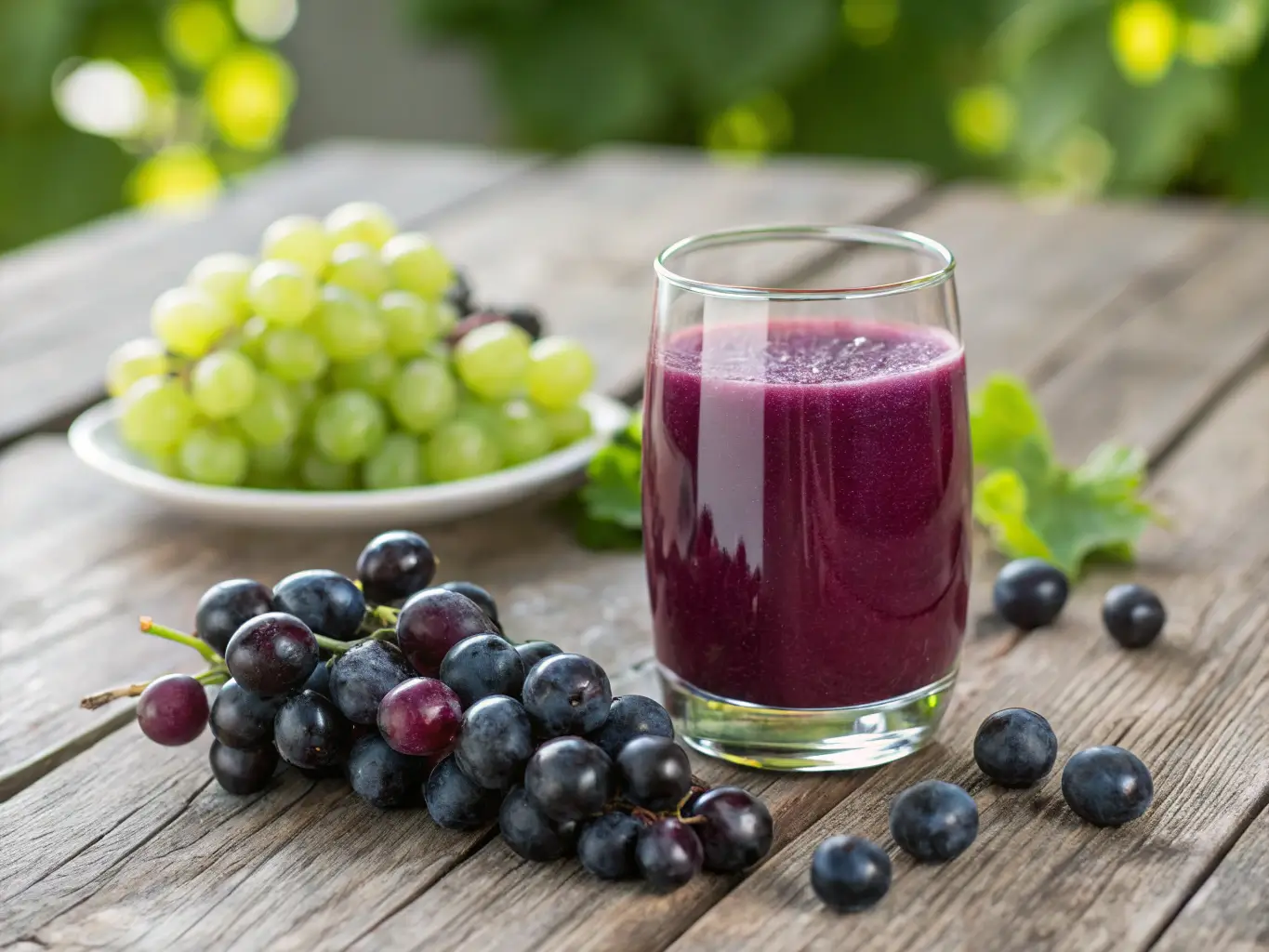
Homemade Grape Juice Recipe (Concord, Green & Black Grapes)
Ingredients
Equipment
Method
- Rinse and de-stem the grapes. Discard any underripe or shriveled ones.

- Mash the grapes using a potato masher in a large stockpot.
- Simmer mashed grapes on medium heat for 10 minutes, stirring occasionally and mashing further as needed.
- Strain the hot mash through a sieve or cheesecloth into a large bowl. Let it drain for a few hours or overnight.
- Optionally, strain a second time for smoother juice.
- Bottle the juice and refrigerate. Consume within one week.
Notes
Why Make Grape Juice at Home?
If you’ve never tried homemade grape juice, you’re in for a surprise. It doesn’t taste like the stuff in the bottle at all. It’s thicker, deeper, almost like a liquid version of the grapes themselves. There’s texture. There’s bite. There’s even a kind of wild sweetness that fades quickly in processed versions.
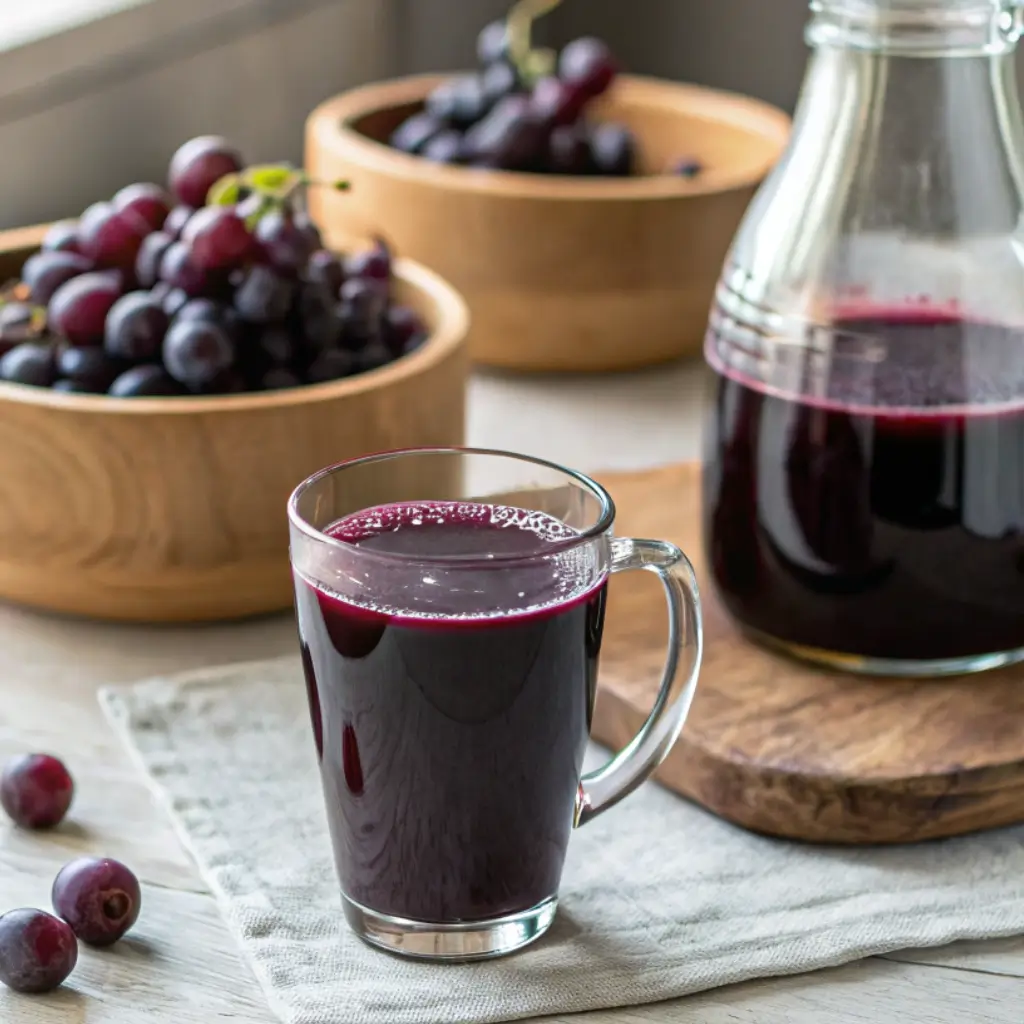
And yeah, you can buy juice. But what you’re really getting is a mix of concentrate, added sugar, and maybe a whisper of grape. When you make it yourself? You control everything. No extras, no weird shelf-stable flavors just real fruit, in your hands, turned into something special.
Honestly, part of the appeal is the process. It’s messy in the best way. A little old-fashioned, maybe. But the scent of those simmering grapes? It fills your kitchen. You stop for a second. You taste it mid-strain. You remember something someone. That’s not just juice. That’s memory.
Is homemade grape juice healthy?
In moderation, yes. It offers antioxidants, hydration, and natural sugars without the additives or artificial flavors you find in store-bought versions.
Ingredients & Equipment for Homemade Grape Juice
What You’ll Need
- 4 to 8 pounds fresh grapes (Concord, green, or black)
- Optional: Sugar (if your grapes are very tart)
- Optional: A pinch of baking soda, this kitchen trick gently raises pH and reduces tartness in juice and other acidic drinks
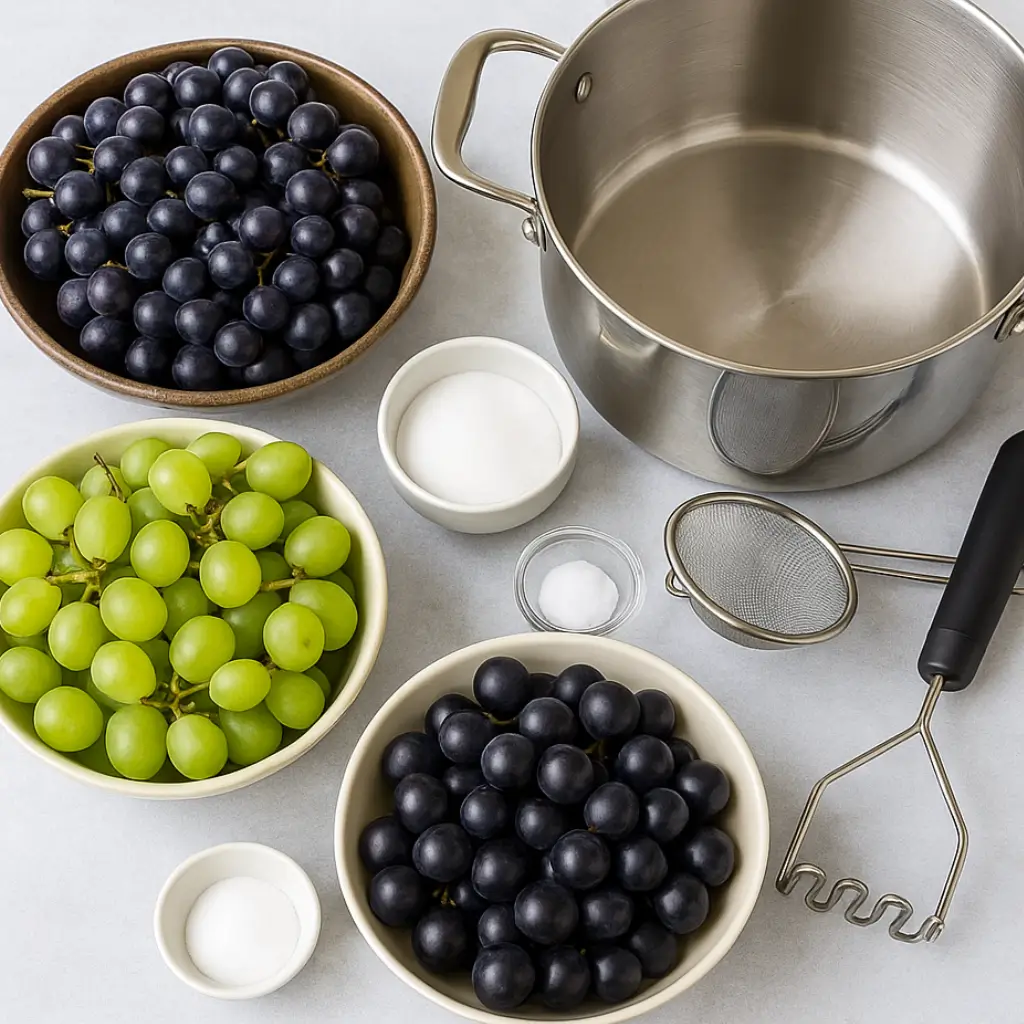
Equipment
- Large stockpot
- Potato masher
- Fine-mesh sieve or 2 layers of cheesecloth
- Large bowl or pot for straining
- Glass jars or bottles for storage
What are the ingredients in grape juice?
At its most basic: grapes. Depending on the variety and your taste, you might add sugar or baking soda, but neither is essential.
How to Make Grape Juice by Boiling (Old-Fashioned Way)
This isn’t fast. It’s not high-tech. But it’s the real thing thick, rich grape juice that actually tastes like fruit.
Step-by-Step
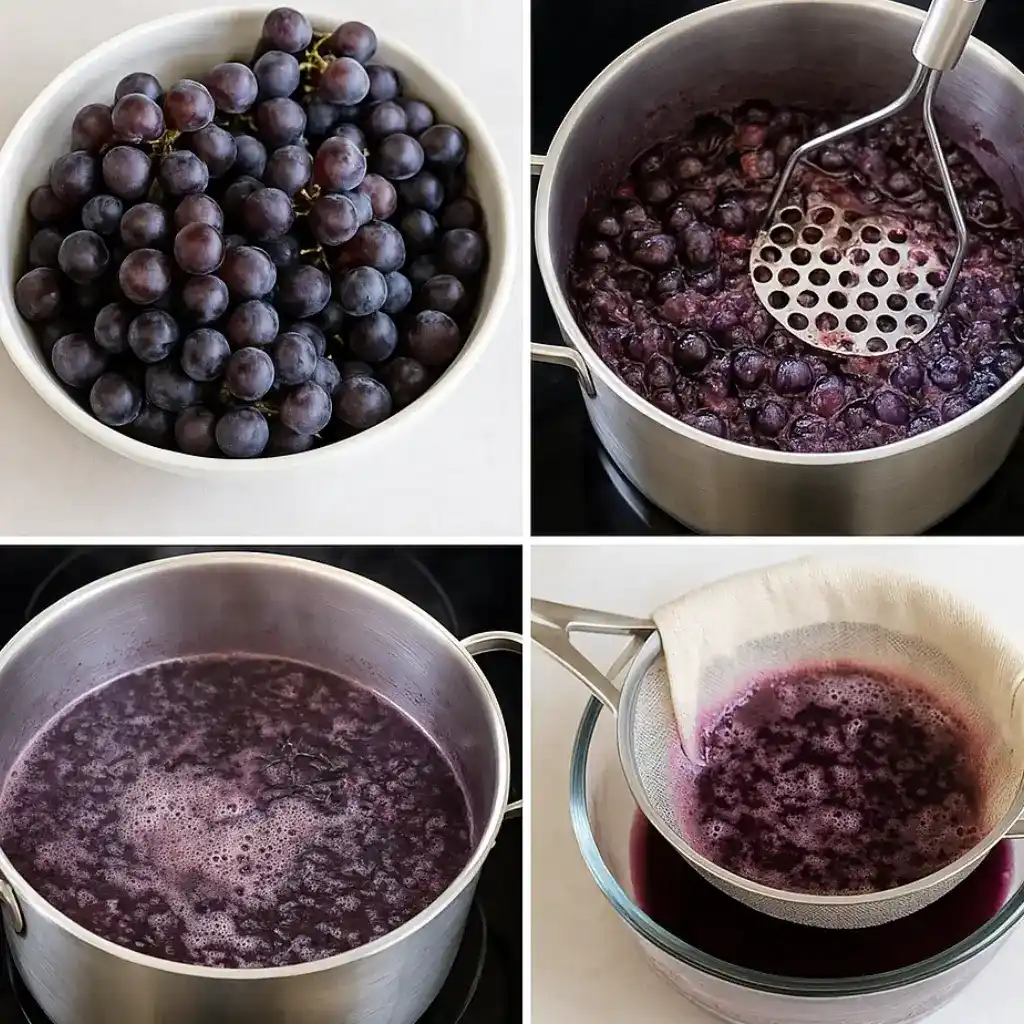
- Rinse & de-stem: Swirl grapes in a bowl of water, remove stems, and discard any bad ones.
- Mash the grapes: Smash grapes in batches in your pot. Break the skins, release the juice.
- Let it simmer: Simmer on medium heat for about 10 minutes, stirring occasionally. Mash again halfway through.
- Strain the mash: Pour through cheesecloth or a sieve over a large bowl. Let sit a few hours or overnight.
- (Optional) Strain again: For smoother juice, do a second pass through clean cloth or mesh.
- Bottle it up: Refrigerate and enjoy within a week.
How to make grape juice with water?
Add about ¼ cup water per pound of grapes during boiling to thin the juice without diluting flavor too much.
How to Make Grape Juice with a Blender (Fast Method)
Instructions
- Rinse & de-stem grapes.
- Blend in batches (2 cups at a time) until liquified.
- Strain through sieve or cheesecloth to remove skins and seeds.
- Taste and tweak as needed.
How to make grape juice with seeded grapes?
If you’re using grapes with seeds, blend them on low don’t pulverize. Then strain carefully through cheesecloth. Most seeds stay behind, but blending too hard can break them down and add bitterness.
Grape Juice Variations by Grape Type (Green, Black & Concord)
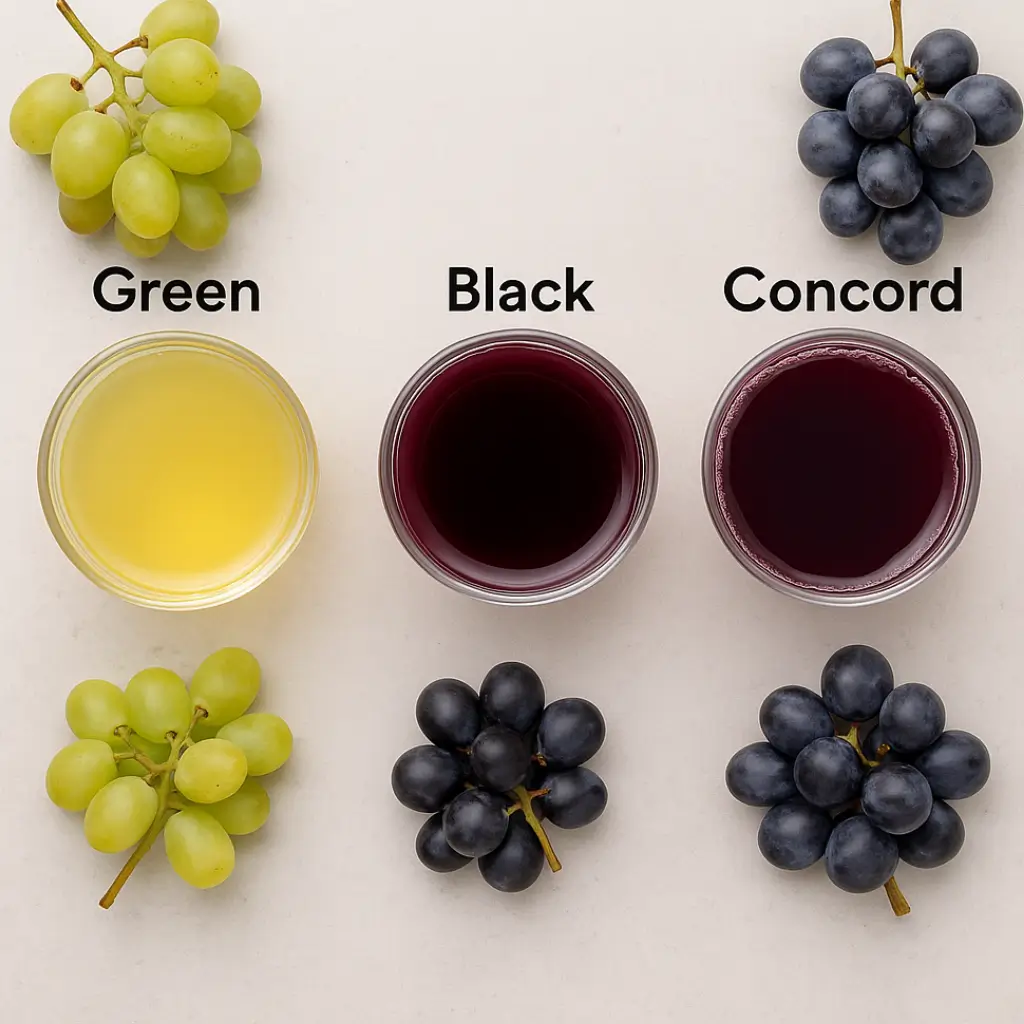
Concord Grapes
Classic and bold, rich in sweetness. Needs little to no sugar.
Green Grapes
Lighter, tangier. Add sugar or lemon juice if needed.
Black Grapes
Dark, complex, almost jammy. Great for mocktails or chilled sipping.
Love grape flavor in all forms? Try our rich and fruity grape ice cream recipe a refreshing way to use leftover juice.
Old-fashioned grape juice recipe?
If you’re looking for the most “from-scratch” version, stick with Concord grapes, boil them slow, and skip sweeteners. That’s how it was done back when grape arbors covered backyard fences and juice got stored in Mason jars.
Tips for Best Flavor & Storage
- Use ripe grapes
- Taste before adding sugar
- Add lemon for brightness
- Mix with sparkling water for a twist
- Store in fridge (lasts ~1 week)
- Freeze only if needed (texture suffers)
What is the best way to juice grapes?
Boiling for depth, blending for speed. Both work depends on your time and taste.
Health Benefits of Grape Juice
Grape juice especially from Concord and black grapes is loaded with antioxidants like resveratrol, which research shows can improve cardiovascular function and act as a powerful anti-inflammatory agent
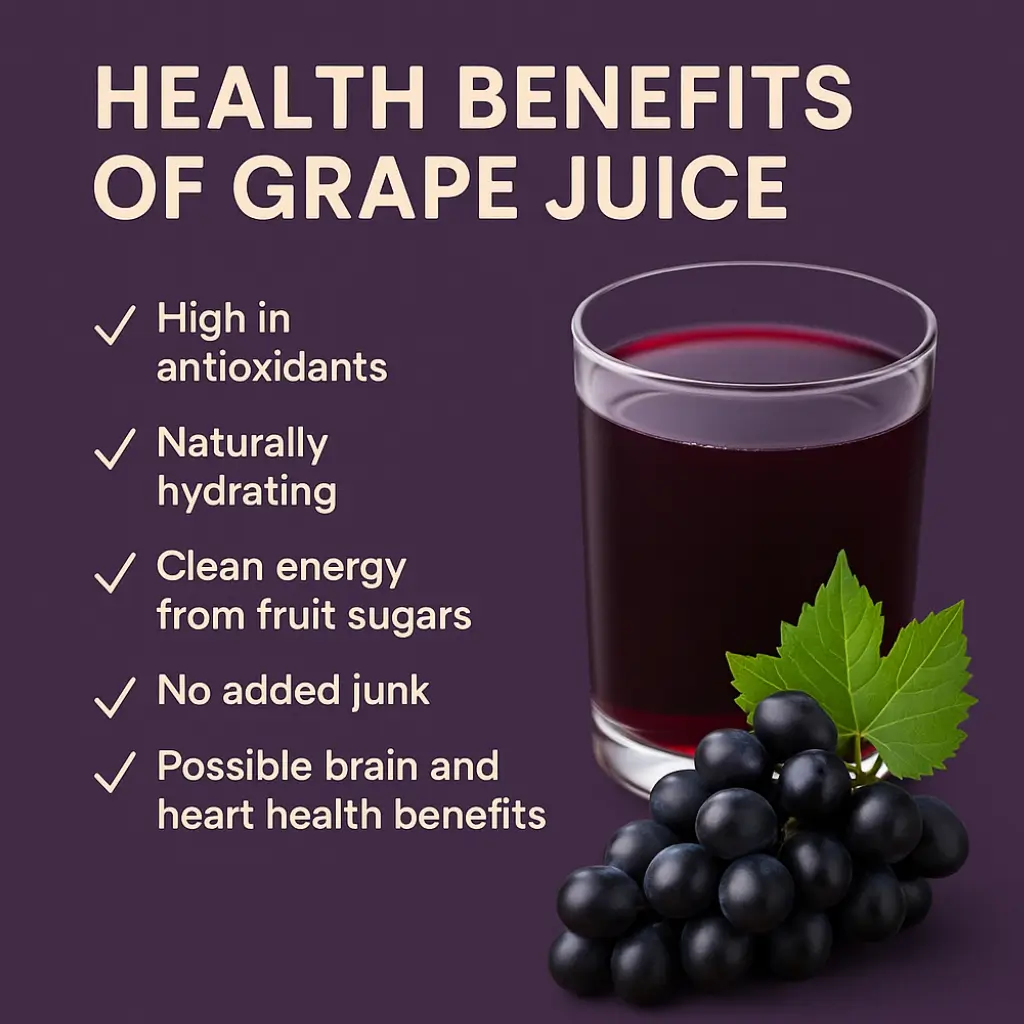
It’s not a miracle elixir, but fresh grape juice has perks:
- High in antioxidants (like resveratrol)
- Naturally hydrating
- Clean energy from fruit sugars
- No added junk
- Possible brain and heart health benefits
Is homemade grape juice healthy?
Yes, especially if unsweetened and consumed in moderation.
FAQ
What’s the best way to juice grapes?
If flavor’s the goal, boiling and straining gives you the richest juice. It’s slower, but more layered. If you’re short on time, blending and filtering works great especially for small batches or seedless grapes.
Can I use grapes with seeds?
Absolutely. Just go easy on the blendingvtoo much, and the seeds can get pulverized and bitter. With the boiling method, the seeds stay mostly intact and strain out easily.
Why add baking soda to grape juice?
A tiny pinch can help neutralize acidity especially useful with tart green grapes. It rounds out the flavor without needing extra sugar. Just don’t overdo it.
How long does homemade grape juice last?
Roughly a week in the fridge. After that, it may start to ferment safe to drink for a bit, but the taste shifts. For longer storage, freeze it (just know the texture won’t be the same).
Can I make grape juice without a juicer?
Yes. Both the boiling and blender methods require zero fancy equipment. All you really need is heat, something to mash with, and a way to strain.
Final Thoughts: More Than Just Juice
Homemade grape juice isn’t just a recipe, it’s a little seasonal ritual. Whether you go with Concords or try something new, the win is that you made it yourself. No shortcuts. No fakes. Just fruit and time.
So go ahead. Make a batch. Pour it cold. Add fizz. Sip slow. And if it made your kitchen smell like someone else’s memory, tell them. Or tell me.
Want to turn your grape obsession into dessert? Check out our creamy, nostalgic twist: Jamaican Grape Nut Ice Cream.

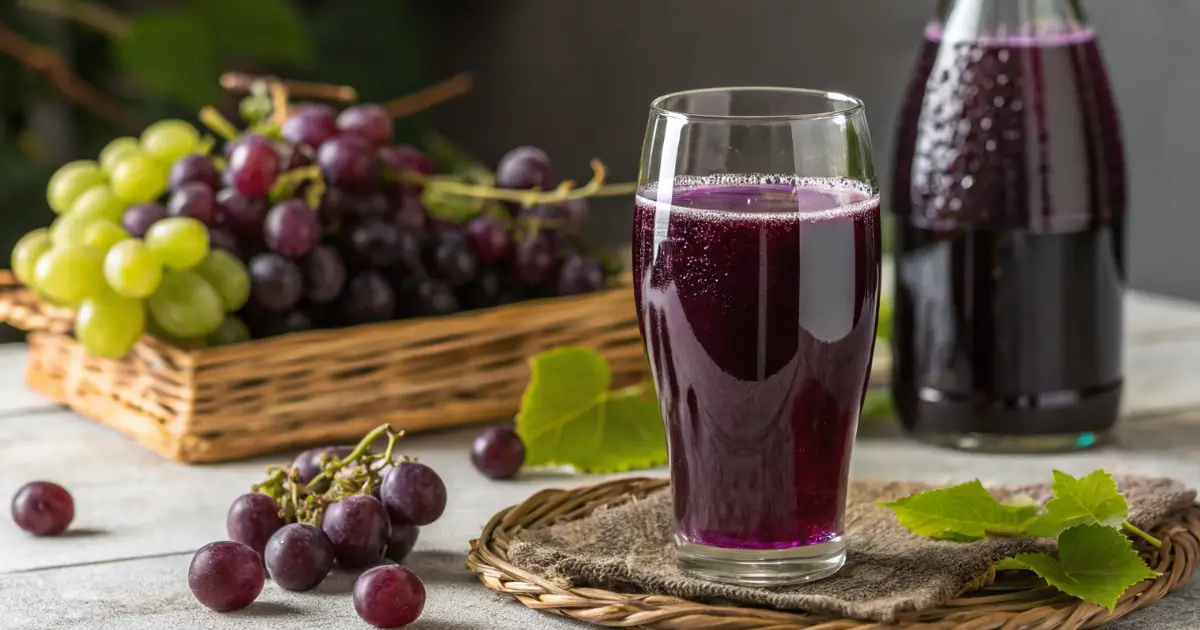
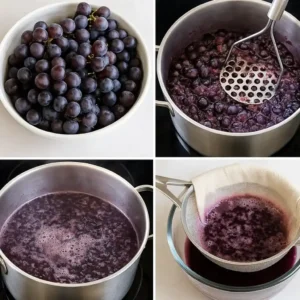
1 thought on “ Homemade Grape Juice Recipe (Concord, Green & Black Grapes)”